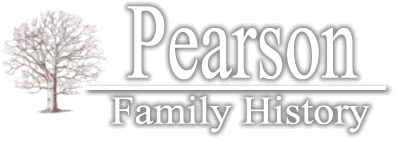
Currently
traced back to the17th. century, the family was centred in the parish of Kingswinford,
some 10 miles to the west of Birmingham. Although the Danes were active in the
area at the time of Sweynne, the name from Anglo Saxon and Jute origins relates
to ‘Swine Ford’, sometimes Swinford Regis. Many of the local names end in
‘ley’ this indicating an open forest glade or clearing. The parish was a
royal possession from the times of Ethelred and Canute until 1204. In 1086 it is
recorded as having 19 households. It was sold to Ralph de Somery, Baron of
Dudley in 1206 for £21 13s 4d. The de Somery family and their descendants were
Lords of the Manor of Kingswinford and until the civil war lived at Dudley
Castle, subsequently at Himley Hall. St. Mary’s is the original church with
part of the original twelth century Norman Tower still in existence and served
the large parish (some 12sq. miles), within the diocese of Lichfield, until St.
Michael’s at Brierley Hill was built and became active in 1766.
Brierley
Hill Parish
originally included Quarry Bank and Brockmoor. Brockmoor (Badgers moor) is one
mile N.W. of Brierley Hill, towards Kingswinford. In the 1650’s Brierley Hill
was no more than waste common land.
A
new parish church, Holy Trinity in Wordsley, was built after the Napoleonic
wars, following the Earl of Dudley's decision to mine coal under the original
parish church of St. Mary's,and took over as Parish church in November 1831, St.
Mary’s continued as a ‘Chapel-at-ease. The parish was finally split up
during the 1840’s into six small parishes. In 1563 the whole Kingswinford
parish consisted of 29 households, totalling some 150 –160 people, by 1665
this had risen to 283 households or some 1,400 people.
This
whole area is at the heart of what was known as the ‘Black Country’. A part
of South Staffordshire, it was integral to the industrial revolution of the late
18th. and throughout the 19th. centuries. All the essential ingredients for iron
making, coal, iron ore and limestone were readily available in the district.
Coal was first recorded as being dug in the area as early as 1273, Glass working
was brought to the area by immigrants from Lorraine in 1574 settling in the
Stour valley. The Lorraine families Henzey, Tyzach and D’Haux became well
established in the Kingswinford area. The oldest glass works in Brierley Hill
are those of Royal Brierley Crystal founded in 1776. With the coming of better
transport, particularly canals, improved roads, coal mining was greatly
developed during the later 1700’s.
It
was dangerous work, with frequent accidents, so much so that the Parish awarded
endowments of £10 to miner’s widows. The local landowners, for example, the
Earl of Dudley financed and developed the coal mines, the quarries and the iron
works. In 1829 the Shut End railway was constructed and opened on the Dudley
estate to carry Kingswinford coal to the Staffs and Worcester canal.
By 1855 the large, Earl of Dudley owned, Round Oak works employed 600 men working 27 Puddling furnaces and 5 Rolling mills, much of the ironwork for the Crystal Palace was produced there.
Coal in 1864 sold for about 8d per cwt.( 3.3p per 50Kg), Puddlers were paid by
the ton of iron produced, approx 9/6d per ton ( 47.5p per 1000Kg) They averaged
51
tons a week, so for a weeks work received about £2 12s (£2.60p) The work was
heavy, strenuous and dangerous, Puddlers, Shinglers and Roll Turners had to
handle hot heavy weights and there were many accidents of burns, eye injuries,
splinters and dislocations.
The area was also heavily engaged in Nail and Chain making, these were largely family operated cottage industries.
The name Pearson occurs in a number of early records, but it is only with the aid of the Parish Registers, which in the case of Kingswinford begin in 1603, that we can connect different members of the family with each other.
The earliest ancestor which can be identified with any certainty is John Pearson who, together with his wife Mary, was the father of a number of children who are recorded in the Kingswinford Parish Registers. Little is known about John and his immediate descendants, although the parish registers reveal that his son William (born 1677) was a nailer and collier, and it is not until we reach his Great Grandson Joseph Pearson, born in 1735, that we start to learn how individual members of the family lived and died, leaving their mark on the pages of history.
This site when completed will contain all current research on this family. Additionally it will include research on other Pearson lines in the area which cannot be connected by current research.
Pearson/Rowley/Parrish/Batham/Gauden
Steve Pearson
PO Box 2483, Dudley, West Midlands, England, DY2 0YH
Tel: +44 (0)1384 571244 E-mail: Steve Pearson
©S Pearson 2002